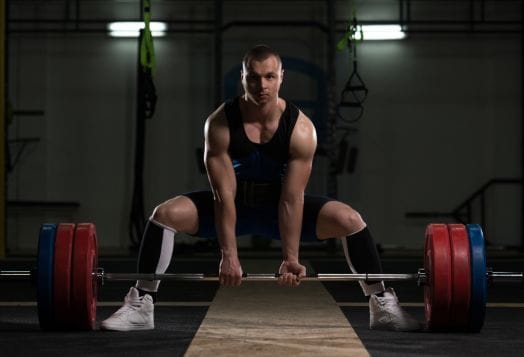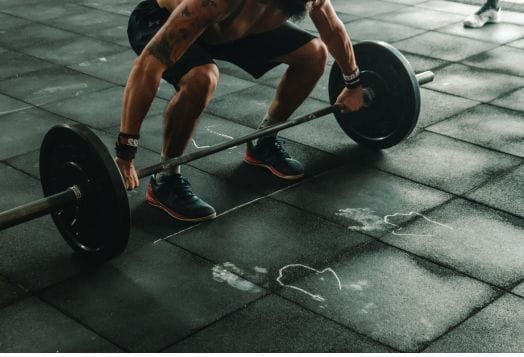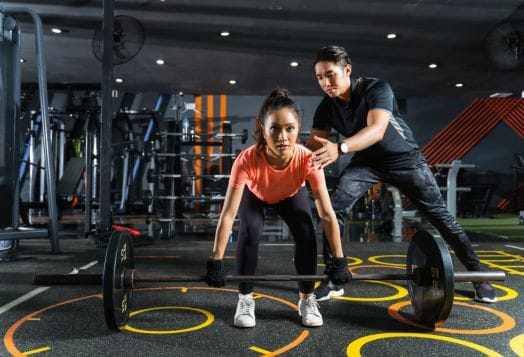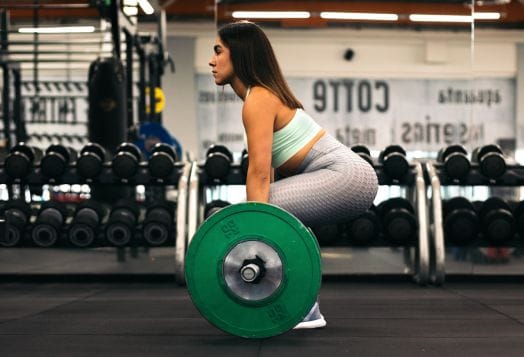Deadlifting is powerful. It’s raw, real, and rewarding. But one wrong move can quickly lead to injury. If you've ever wondered why your lower back feels like it’s plotting revenge, or why your progress has stalled despite lifting heavier, the answer likely lies in your deadlift form. Let’s break it down and see how you can lift safer and stronger.

Why Proper Deadlift Form Matters
Ever seen someone at the gym pulling weight with the intensity of a Viking, but with a spine doing the limbo? That’s exactly what you don’t want. Proper deadlift form involves engaging the right muscles while protecting your spine and joints, and it’s the foundation of safe, effective strength training.
When you master the safe deadlift technique, your glutes, hamstrings, core, and back muscles work more efficiently. You lift heavier, feel stronger, and train longer without burning out.
Now, let’s talk danger. Poor form can lead to strained lower backs, herniated discs, muscle imbalances, and diminished performance. All of this can be avoided with a bit of focus on spinal alignment during deadlift and overall lifting technique essentials. So, let's dive right in.
Your Step-by-Step Guide to the Perfect Deadlift Form
When done right, the deadlift is one of the most powerful full-body exercises in your strength training arsenal. But it’s not just about lifting weight off the floor; it’s about precision. Learning how to do a deadlift properly means mastering each phase of the lift, from setup to lockout, with complete control and intention.
Let’s break it down.
The Setup
Before you even touch the bar, your body needs to be in the right position.
Feet: Hip-width apart, toes pointing slightly outward.
Barbell: Positioned over your mid-foot (not your toes).
Grip: Hands just outside your knees. Use a double overhand grip to start.
Shoulders: Slightly in front of the barbell.
Back: Neutral spine, no rounding
This position creates a strong base and sets you up for safe, efficient movement.

The Movement
Here’s the step-by-step motion for a textbook deadlift form:
Brace your core: Inhale deeply and lock in your abs. This stabilises your spine.
Keep your back flat: Your spine should be in a neutral position from neck to tailbone.
Hinge at your hips: Push your hips back, not your knees forward.
Drive through your heels: As you lift, push the floor away with your feet.
Keep the bar close: It should graze your shins and thighs on the way up.
Stand tall: Extend hips and knees simultaneously at the top.
Lower with control: Reverse the movement, don’t let gravity do the work.

A certified personal trainer would tell you that success comes down to the basics:
Keep your chest up
Avoid a rounded back
Breathe in before you lift, exhale on the way up
Whether you're learning how to do a deadlift or refining your technique, these steps are golden. Want to master the hip hinge movement? Lock in your grip positioning for deadlifts and maintain core engagement.
Pro Tips to Keep Your Deadlift Strong and Safe
Once you’ve got the basics down, the real challenge is keeping your deadlift form sharp as you get stronger. Strength is earned, but technique is what keeps you in the game.
1. Warm Up Properly with Mobility Drills
Cold muscles don’t lift well, and they’re prone to injury. Start every session with warm-up routines for lifting, focusing on hips, hamstrings, and ankles. Think leg swings, hip circles, and squats.
2. Use Video or Coaching for Form Checks
Record your lifts or work with a coach. They can spot minor issues like spinal tilt or knee drift that you might miss. This is key for progressive deadlift training and injury prevention.
3. Start Light, Perfect the Movement
Too many people rush to lift heavy. But real strength is built through control. Use light weights to refine your deadlift form. Never compromise form for kilos.
4. Add Accessory Movements
Want a stronger deadlift? Train the muscles that support it. Add Romanian deadlifts, glute bridges, and hamstring curls to your routine. These accessory exercises for deadlift improvement enhance your posterior chain and help correct imbalances.
5. Prioritise Recovery and Flexibility
Don’t skip stretching, foam rolling, and sleep. Recovery improves performance and prevents breakdown. Flexibility in your hips, ankles, and thoracic spine is essential for maintaining deadlift safety as you lift heavier over time.

Deadlift Mistakes That Sabotage Your Gains (And How to Fix Them)
Even experienced lifters fall into bad habits, especially when chasing PBs. Here are the most common deadlift mistakes and how to correct them.
The Usual Suspects:
Rounded back
Pulling with arms, not legs, and hips
Bar too far from the body
Hyperextending at the top
Wobbly grip or uneven weight
The Fix:
Focus on a neutral spine. Your back should be straight, not banana-shaped.
Engage your posterior chain (glutes, hamstrings, back).
Keep the bar path straight and close. Think “scrape the shins.”
Control the lockout, don’t snap into it.
Strengthen grip and balance loads properly.
A good fitness coach or injury prevention specialist can instantly spot these issues. Use these deadlift safety tips, and you’ll turn awkward lifts into poetry in motion.
Lift Smarter, Not Just Heavier
Mastering the deadlift isn’t about brute force. It’s about control, consistency, and care. With the right deadlift form, you unlock real strength while protecting your body from setbacks. From warming up properly to spotting common mistakes, using tips for deadlift success ensures every lift is a step forward, not a risk backwards. Remember, proper setup, safe movement, smart accessory work, and active recovery are extremely important.
Stay focused, stay safe, and lift like you mean it. Your strength journey starts and lasts with perfect form.




